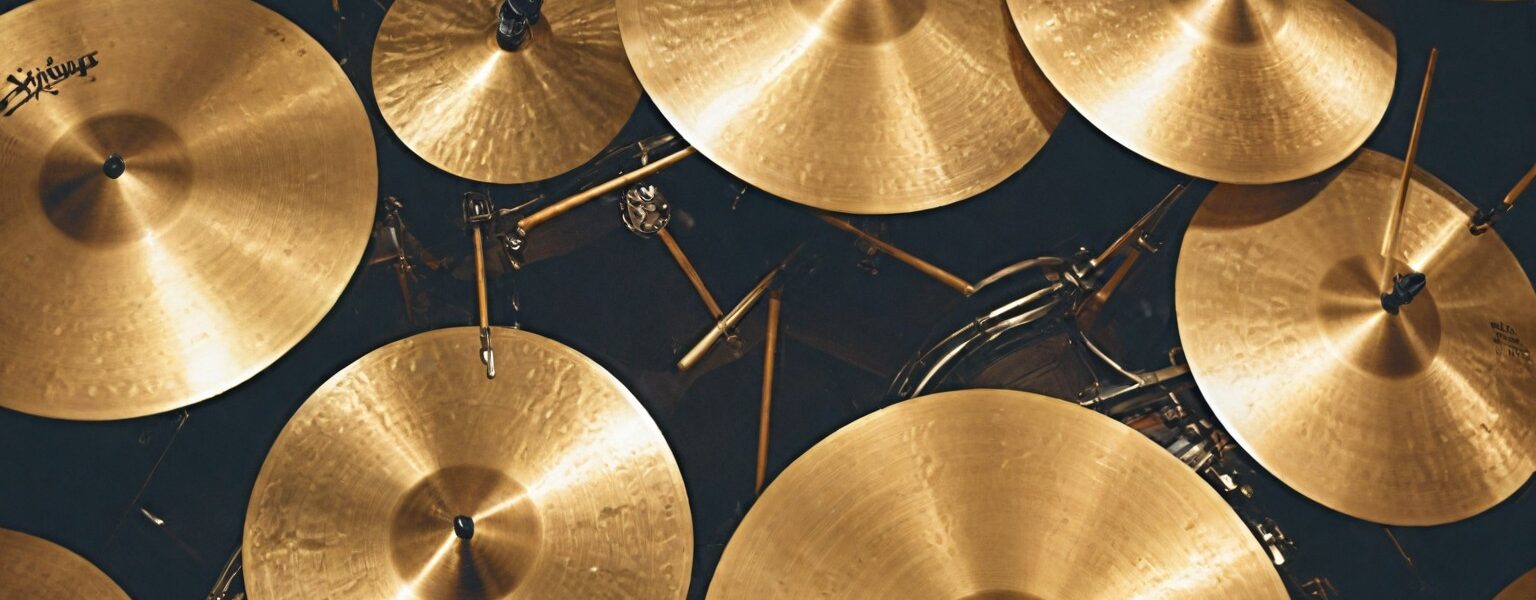When you think of a drum kit, one of the first things that come to mind is the shimmering, crashing sound of cymbals. Whether it’s the explosive hit of a crash cymbal or the rhythmic ping of a ride, cymbals are essential to any drum kit. In this guide, we’ll explore everything you need to know about cymbal drum kits, from their history to choosing the right ones for your setup.
Cymbals are more than just metal discs; they’re a vital part of a drummer’s toolkit. They add color, texture, and dynamics to music, making them indispensable in various genres. Understanding the different types of cymbals and how to care for them can elevate your drumming experience, whether you’re a beginner or a seasoned pro.
History of Cymbals
Origins of Cymbals
Cymbals have a long history, dating back to ancient civilizations like the Egyptians, Greeks, and Romans. Originally used in religious ceremonies and military marches, these instruments have evolved significantly over the centuries.
Evolution of Cymbals in Music
From classical compositions to jazz, rock, and metal, cymbals have found their place in a wide array of musical styles. The introduction of modern manufacturing techniques in the 20th century revolutionized cymbal production, allowing for a broader range of sounds and uses.
Historical Significance in Drumming
Cymbals were traditionally hand-hammered, each one crafted uniquely, leading to distinct sounds that were cherished by musicians. The craftsmanship involved made them not just instruments but works of art, passed down through generations of drummers.
Types of Cymbals
There are several types of cymbals, each serving a unique purpose in a drum kit.
Crash Cymbals
Crash cymbals are designed to produce a loud, explosive sound, perfect for accentuating powerful moments in music. They’re a staple in rock and metal genres but can be found in almost any drum kit setup.
Ride Cymbals
Ride cymbals are usually larger and are played in a continuous, “riding” pattern. They offer a clear, sustained tone that helps to maintain the rhythm and flow of a piece, especially in jazz and pop music.
Hi-Hat Cymbals
The hi-hat consists of two cymbals mounted on a stand, played by foot pedal and stick. It’s one of the most versatile cymbals in a kit, used for everything from keeping time to creating intricate rhythms.
Splash Cymbals
Splash cymbals are small and produce a quick, bright sound. They’re often used for special effects and accents, adding an extra layer of texture to a drumming piece.
China Cymbals
Known for their unique, trashy sound, China cymbals are used to create dramatic effects, often in rock and metal music. Their upturned edges give them a distinctive look and sound.
Choosing the Right Cymbal for Your Drum Kit
Factors to Consider
When choosing cymbals, consider the genre of music you play, your playing style, and your budget. For instance, jazz drummers might prefer thinner, more responsive cymbals, while rock drummers might go for thicker, more durable ones.
Tips for Beginners
Beginners should start with a basic set, including a crash, ride, and hi-hat. These will cover most playing styles and give you a solid foundation to build upon.
Tips for Advanced Drummers
More advanced drummers might explore adding specialty cymbals like splashes, Chinas, or even custom-made options to their kits. Mixing and matching different cymbals can create a unique sound tailored to your style.
Cymbal Maintenance and Care
Proper care can extend the life of your cymbals and keep them sounding their best.
Cleaning Your Cymbals
Regular cleaning with a soft cloth and a cymbal cleaner can remove fingerprints, dirt, and oxidation. Avoid using harsh chemicals or abrasive materials, as these can damage the cymbal’s finish.
Storing Your Cymbals
Store your cymbals in a cool, dry place, preferably in a cymbal bag or case. This prevents them from getting scratched or dented, which can affect their sound.
Extending Cymbal Lifespan
To avoid cracking, don’t over-tighten your cymbals on their stands and try to strike them at a slight angle. This distributes the impact more evenly and reduces the risk of damage.
Famous Cymbal Makers
Some brands have become synonymous with quality cymbals. These include:
- Zildjian: One of the oldest and most respected cymbal makers, known for their wide range of sounds.
- Sabian: Offers innovative designs and a vast selection suitable for various music genres.
- Paiste: Known for their bright, cutting sound, ideal for live performances.
- Meinl: Popular among modern drummers for their unique and diverse cymbal offerings.
How Cymbals Are Made
The process of making cymbals is a blend of art and science.
Raw Materials Used
Cymbals are typically made from bronze, brass, or a combination of metals. The exact composition can significantly affect the sound.
Manufacturing Process
Cymbal making involves casting, rolling, hammering, and lathing. Each step shapes the cymbal’s tone, with hand-hammering adding a personal touch that many drummers cherish.
Quality Control
Before leaving the factory, cymbals undergo rigorous testing to ensure they meet the brand’s sound and durability standards.
Impact of Cymbals on Sound and Music
Cymbals play a crucial role in shaping the sound of a drum kit.
Role in Different Music Genres
Different genres use cymbals in varying ways. For example, jazz drummers may rely heavily on ride cymbals for subtlety, while metal drummers may use crashes and Chinas for their aggressive sound.
How Cymbals Affect Sound Dynamics
Cymbals add dynamics to music, from soft, whispering splashes to loud, crashing accents. Their versatility makes them essential for creating a dynamic performance.
Common Problems with Cymbals
Cymbals, like all instruments, can face issues over time.
Cracking
Cracks are often caused by improper striking technique or using cymbals that are too thin for the playing style. Small cracks can sometimes be repaired, but large ones usually mean the cymbal is beyond saving.
Keyholing
This occurs when the hole in the center of the cymbal becomes worn and misshapen, usually due to over-tightening or poor mounting. Using proper felts and washers can help prevent this.
Warping
Warping can happen if a cymbal is stored in a hot environment or subjected to excessive force. Warped cymbals may still be playable but will have a different sound.
Cymbal Accessories
Enhance your setup with these essential accessories.
Cymbal Stands
A sturdy stand is crucial for positioning your cymbals correctly and ensuring they stay in place during a performance.
Cymbal Bags and Cases
Protect your cymbals during transport with padded bags or hard cases. This is especially important for gigging drummers who frequently travel with their kit.
Cymbal Felts and Washers
These small but vital accessories help to cushion your cymbals and protect them from damage caused by metal-on-metal contact with the stand.
Customizing Your Cymbal Setup
Your cymbal setup can be as unique as your playing style.
Mixing and Matching Cymbals
Experiment with different cymbal combinations to create a signature sound. Mixing brands and types can yield interesting results that set you apart from other drummers.
Adding Effects with Specialty Cymbals
Specialty cymbals like ozone crashes or sizzle cymbals can add a unique flair to your playing, offering new sonic possibilities.
Cymbals in Modern Music
Cymbals continue to evolve in today’s music scene.
Role in Contemporary Genres
In genres like electronic music, cymbals are often sampled or processed to create entirely new sounds. They remain a crucial element in live and recorded music alike.
Innovations in Cymbal Design
Manufacturers are constantly innovating, with new shapes, sizes, and materials pushing the boundaries of what cymbals can do. Hybrid cymbals, for example, combine the characteristics of multiple cymbal types in one.
The Future of Cymbals
What lies ahead for cymbals?
Trends in Cymbal Manufacturing
Sustainability is becoming a focus, with brands looking to reduce waste and use more eco-friendly materials in production.
New Materials and Technologies
Advancements in metallurgy and design may lead to cymbals that offer greater durability, lighter weight, and even more versatile sounds.
Conclusion
Cymbals are a vital part of any drum kit, offering a wide range of sounds and playing techniques. Whether you’re a beginner or a pro, understanding the different types of cymbals, how to choose them, and how to care for them will enhance your drumming experience. With the right cymbals, you can add depth, color, and excitement to your music.




